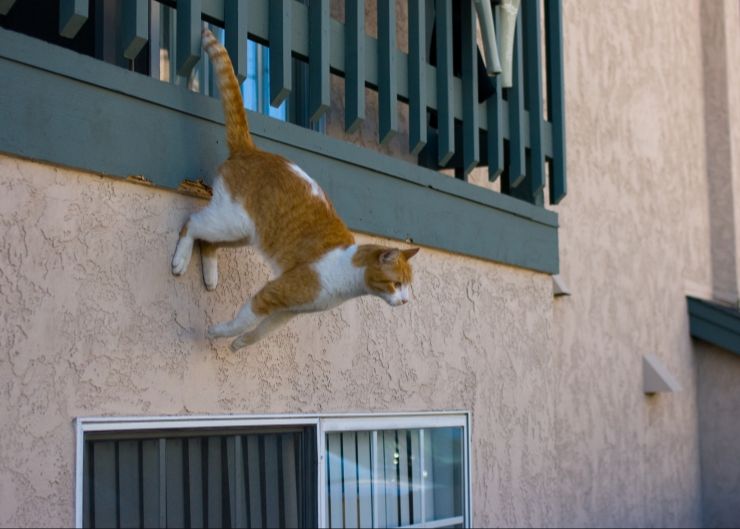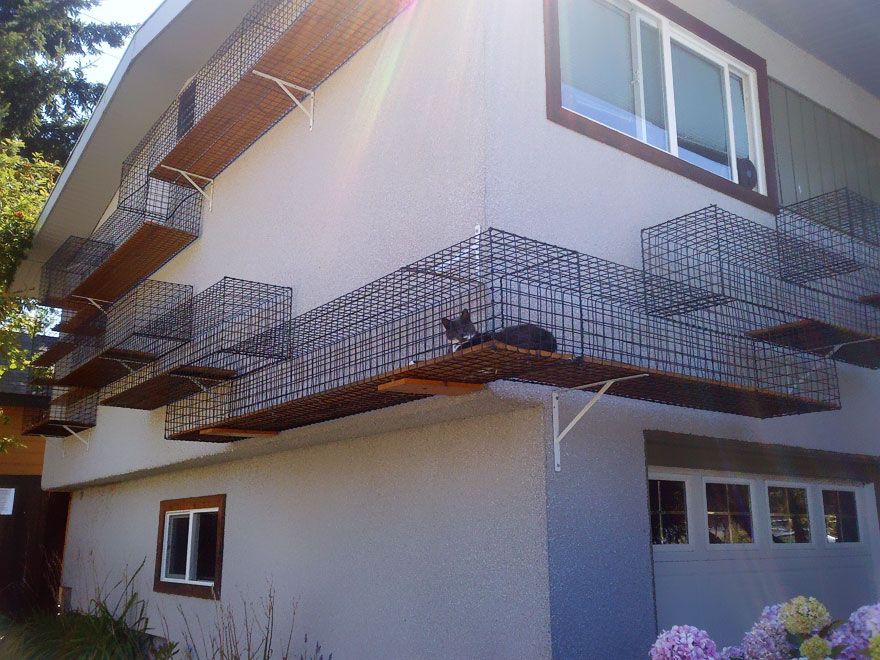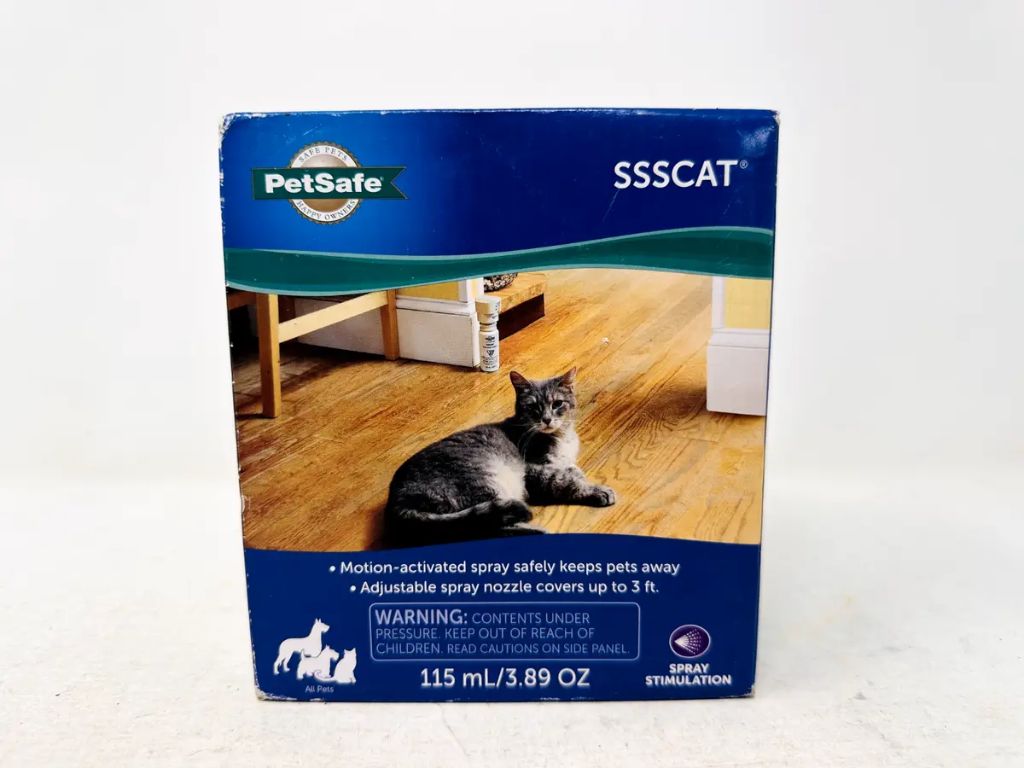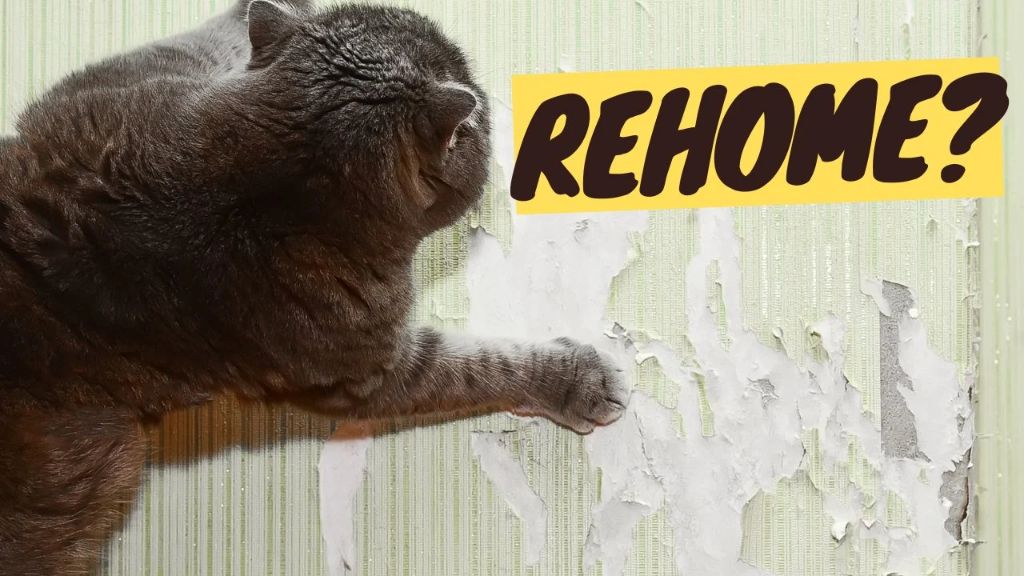Balconies and patios can seem like ideal spots to let your cat get some fresh air and enjoy the sights and sounds of the outdoors. However, balconies can also pose significant dangers for cats that owners need to be aware of.
One of the biggest risks is that cats may try to jump off or climb over balcony railings, potentially leading to injury or even death from falls. As natural climbers, cats are prone to being attracted to railings and may try to chase birds or other prey they spot from a balcony. There are many sad cases of cats falling or leaping from balconies multiple stories up (Source).
Even on lower balconies, cats that fall can suffer sprains, fractures, or other traumatic injuries. Cats may also get stuck on precarious balcony ledges or face other dangers like extreme heat from sun exposure.
For cat owners living in apartments or multi-story homes, taking proper precautions to cat-proof balconies is extremely important for preventing accidents and keeping cats safe.
This guide will cover tips for how to effectively cat-proof your balcony while still allowing your cat to enjoy the fresh air.
Assess Your Balcony
The first step in cat-proofing your balcony is taking stock of its size and layout. According to research, the average apartment balcony size ranges from 20 to 100 square feet, with typical dimensions between 4-5 feet deep and 8-10 feet wide (1). However, balcony sizes can vary greatly depending on the apartment building. When assessing your balcony’s size, consider the length, width, and depth of the space. This will help determine what cat-proofing solutions will work best.
Take note of the balcony’s construction materials as well. Wood or metal railings may require different deterrents than glass or concrete. Check where potential weak points are that a cat could jump on or climb up. Also pay attention to any overhangs, ledges, or other features a daring cat could use to get a foothold. Knowing the balcony’s physical specifications will make it easier to find and block any problematic areas.
Finally, examine how the balcony is situated in relation to the rest of your apartment. Is it connected to a bedroom or living room? Where does it exit from – the side or center? Understanding the balcony’s layout will help you position cat deterrents effectively. With an assessment of its size, materials, and layout, you’ll be ready to start cat-proofing.
(1) https://apartmentabc.com/what-is-the-average-size-of-an-apartment/
Block Off Ledges and Railings
One of the most effective ways to cat-proof a balcony is to block off ledges and railings using plexiglass or wood panels. Studies show that most cat falls occur when cats have access to elevated surfaces like railings and climb up unsteady surfaces that cannot support their weight (https://en.wikipedia.org/wiki/High-rise_syndrome).

Installing plexiglass or wood panels along the balcony railing and edges can physically prevent your cat from being able to climb up and fall over the edge. Make sure the barriers are securely installed and tall enough that your cat cannot jump over them. You may need panels that are 5-6 feet tall depending on your cat’s abilities.
Tightly-woven mesh screens are another option, installed either vertically along railings or horizontally to block ledges. The mesh needs to have openings too small for your cat to get a pawhold or toothhold to climb (less than 1/4 inch). This still allows light and air flow while restricting access. Check screens regularly for any loose edges or holes from wear.
Blocking off ledges, railings and elevated surfaces can effectively deter your cat from their usual climbing routes. Coupled with other deterrents and training, you can help prevent dangerous balcony falls.
Install Shelves or Catwalks
One way to provide safe spaces for cats on balconies is to install shelves or catwalks along the walls or railings. These provide an elevated area for cats to walk, play, and look out over the balcony. Shelves should be at least 12 inches deep to give cats adequate space to walk and lay down. You can use wooden boards, metal brackets, or plastic shelving materials. Make sure any shelves are securely fastened and able to support your cat’s weight.
Catwalks are extended walking paths that run along the perimeter of a balcony. You can install catwalks using brackets or shelves attached to the walls or railings. The catwalk surface should be made of a grid or other material that allows cats to get good traction and prevents falls. Leave small gaps in the material for drainage. Try to provide multiple levels or tiers of catwalks at different heights to make the space more enriching and fun for cats.
Providing shelves and catwalks helps satisfy a cat’s desire to perch up high while keeping them safely away from balcony edges and railings. It also gives them an engaging area to walk and climb. Just be sure to affix any DIY shelves or catwalks securely to prevent accidents. Check for stability and wear periodically. With some creativity, you can design customized shelving and walking areas to make your balcony much more cat-friendly. (source)

Use Deterrent Sprays
One effective way to deter cats from balcony ledges and railings is by using citrus, vinegar, or essential oil sprays.
Citrus sprays like lemon or orange make surfaces unappealing to cats. The strong citrus smell overwhelms their sensitive noses. Spray ledges and railings with lemon juice or citrus-scented sprays like this one.
Vinegar is another scent cats dislike. A 50/50 mixture of vinegar and water can be safely sprayed onto surfaces. The vinegar smell dissipates quickly but acts as a repellent while present.
Essential oil sprays containing lavender, citronella, peppermint, eucalyptus and other fragrances can also deter cats. Check for pet-safe oils before using them. Spray balconies and railings daily or as needed.
Reapply these sprays frequently, especially after rain or wind. Try alternating between different scents to maximize effectiveness. With regular use, these sprays can teach cats to avoid treated areas.
Try Motion-Activated Devices
Motion-activated devices can be effective deterrents to keep cats off balconies. These devices activate when they detect a cat’s movement, startling the cat and deterring them from the area.
Motion-activated sprinklers like the PetSafe SSSCAT Spray Pet Deterrent [1] spray a quick burst of air when triggered, scaring cats away. Place them along railings, ledges, or anywhere cats try to access.

Motion-activated alarms also startle cats when activated. The sudden loud noise will surprise cats and deter them from the balcony. Look for cat-specific alarms designed as deterrents.
Use multiple motion-activated devices for the best coverage. Position them in problem areas and along the balcony perimeter. Check batteries and sensitivity settings regularly to ensure proper functioning.
While startling, motion-activated deterrents are harmless to cats. With consistent use, cats will learn to avoid the areas that trigger the devices.
Provide Enrichment
Keeping your cat mentally and physically stimulated can reduce their desire to access the balcony. Provide a variety of enrichment items inside your home such as cat trees, scratching posts, food puzzle toys, treat balls, catnip toys, and interactive toys like feather wands and laser pointers (Source 1). Cat trees give your cat a place to perch, scratch, and play. Place cat trees by windows so your cat can survey the outdoors. Rotate toys to keep your cat interested and hide treats around your home for them to find.
You can also make DIY enrichment toys from toilet paper tubes, paper bags, and cardboard boxes (Source 2). Brain games and food puzzles engage your cat’s natural hunting instincts. Dedicate playtime each day to interact with wand toys. Try placing catnip on appropriate scratching surfaces.
Train Your Cat
One of the best ways to keep cats from going on the balcony is through positive reinforcement training. This involves rewarding them when they avoid the balcony. Start by identifying triggers that make your cat want to go on the balcony, such as seeing birds or other animals outside. Whenever your cat starts moving toward the balcony, redirect their attention by offering a treat, toy, or affection. Praise and reward them when they ignore the trigger. You can also place treats or toys near doorways to redirect them.
Additionally, set up deterrents on the balcony like motion-activated devices. Whenever your cat avoids setting them off, give them a reward. This reinforces that staying away is positive. With time and consistency, you can shape their behavior to avoid the balcony entirely. Stay patient, as it may take many repetitions before they learn. The key is redirecting rather than scolding them when they go near the balcony.
According to this Reddit thread, redirection is essential and punishment is ineffective for training cats. Rewarding them for avoiding the balcony will be more successful.
Supervise Your Cat
One of the most important things you can do to keep your cat safe on the balcony is to supervise them whenever they are outside. Never let your cat out on the balcony alone. Even if you have cat-proofed it thoroughly, accidents can still happen if no one is watching.
When your cat is on the balcony, stay with them the whole time. Keep an eye on what they are doing and be prepared to intervene if they start exhibiting any risky behaviors like jumping up on railings or trying to squeeze through gaps in the netting.
You may also want to consider leash training your cat so you can maintain control of them when outside. With a harness and leash, you can allow your cat some freedom to explore the balcony while still keeping them safely tethered. Take the training slow and make sure your cat is comfortable wearing a harness before taking them out. Give them treats and praise so they associate the harness with positive experiences.
While supervising and leash training take diligence, they are worthwhile to ensure your cat can enjoy balcony time safely. Don’t let your cat out unless you can devote your full attention to monitoring them.
When to Seek Alternatives
If your cat continues to show interest in accessing the balcony despite trying the previous suggestions, it may be time to consider alternatives like rehoming or building an outdoor enclosure.
Rehoming can be a difficult decision, but may be the right choice if your cat is highly motivated to go outside and is experiencing stress or behavioral issues from being confined indoors. Look for adoption organizations that can properly screen potential adopters to ensure your cat will be going to a safe, loving home. Be transparent about your cat’s history and needs.[1]

Another option is constructing a “catio” or outdoor cat enclosure on your balcony. This allows your cat access to fresh air and scents while keeping them safely contained. Catio kits are available for purchase or you can build a custom enclosure. Make sure it is fully screened and has ample places for your cat to climb, perch, and play. Add shelves, ramps, cat trees and toys. Supervise your cat while in the catio and bring them indoors at night.[2]
With patience and creativity, you can find a solution that enables your cat to enjoy balcony access safely.

